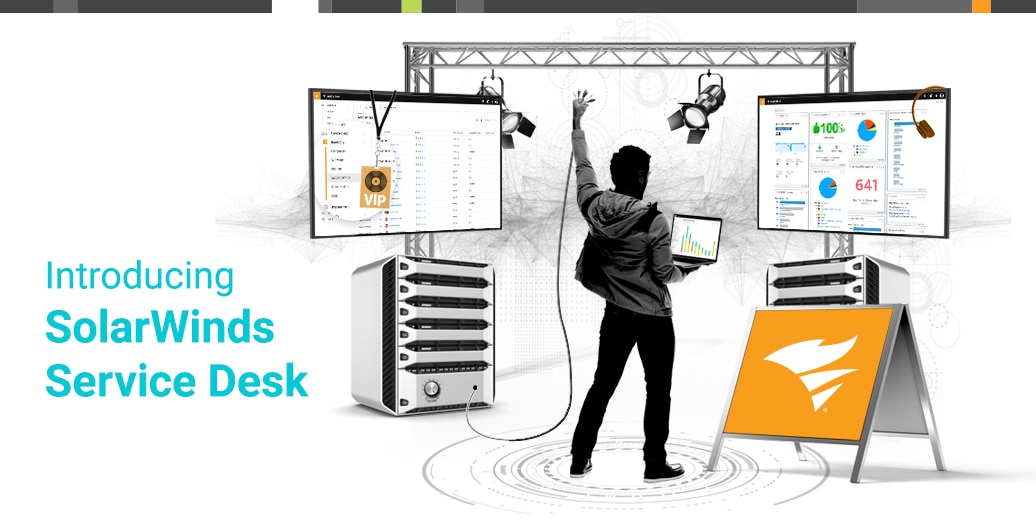The past year has emphasized the importance of digital experience, especially in service delivery. For organizations forced to adopt flexible remote work policies, the IT help desk has been instrumental in business continuity.
If end users in your organization are still struggling to find the necessary resources to support their technology, or if IT is still adjusting to the influx of tickets and requests, it may be time to evaluate the foundation of your strategy. In any case, use these best practices to improve help desk management for tangible results.
Promote Service Portal Adoption
Nothing slows down the help desk like ad hoc requests. Whether it’s instant message requests, email tickets with little context, or employees in the office walking up to IT’s work space, there’s a better way to handle these issues. All of these methods are difficult for the help desk to manage, and it’s a slow, blind experience for the requester.
Push all of this activity to the portal. Create one place employees can visit to submit a break/fix incident, request access to a business application, or any address any other technology needs. From here, IT can collect more data than an email, drilling down to the specific upon submission. This eliminates the potential back-and-forth, allows IT to identify assets assigned to the requester, and track historical data.
How can you drive this habit-forming behavior for end users?
For starters, meet them in the places they’re accustomed to submitting help desk requests. When they send an email, send an automated reply with a link to the portal. If they call, create an on-hold message encouraging them to try the portal. If they walk up, it’s a perfect opportunity to walk them through the benefits.
Beyond that, throw a launch party. Create signage in the office. Send out a company-wide notice. Be sure to emphasize that this will help employees resolve their technology issues faster.
Build a Knowledge Base
Struggling with a backlog of repetitive tickets? It’s a common theme, especially if users are experiencing similar issues working from home. Perhaps it’s trouble connecting to the VPN or home Wi-Fi issues.
One way to deal with related tickets is to group them together in a problem (when it’s appropriate). If an application is down, connect all incoming tickets to the problem record and work them at once.
The other way to quickly resolve the most common issues is through
knowledge management.
If help desk technicians see the same tickets more than once, it’s worth investing a bit of time to create a knowledge base article. This is certainly helpful for the internal team as techs can quickly reference and attach a solution to a repeat ticket. But it can also be external-facing. A commitment to the knowledge base will help provide portal users with a list of FAQs or common solutions—saving the requester and the help desk time through case deflection.
Automate Service Request Management
Differentiating between
incidents and service requests may sound like semantics, but it can save a lot of time managing service delivery workflow.
For multi-layer, potentially complex requests that involve multiple steps and stakeholders, consider automating the task distribution progress. Encourage requesters to submit the appropriate forms for application access, new laptops, or even employee onboarding. By customizing this request form and corresponding workflow, the help desk can automatically spawn tasks and approvals to each stakeholder involved in the service delivery.
These types of requests could certainly be handled through incident management, but the ceiling is much lower on automation and efficiency.
Categorize Tickets
There are two primary reasons that categorizing tickets can lead to more effective help desk management.
First, categorized tickets can be prioritized and
assigned automatically for larger teams that specialize. Even for smaller teams of generalists, tickets of certain categories (perhaps related to critical business applications) might automatically escalate to the top of the queue. If end users are submitting tickets through the portal, these tickets will arrive at the help desk already categorized, which means they can be automatically assigned and prioritized.
Second, help desk reporting depends on quality data, and "ticket category" is one of the most important pieces of data you can collect. Knowing the amount of time and resources spent on a particular category of incidents might lead to tangible improvements in form of knowledge articles, end user training, or staffing decisions.
Assign Actionable SLAs
Service level management is a great way to promote prioritization and accountability in the help desk, but
don’t go overboard.
Be sure that every service level agreement (SLA) is driving an
action that leads to better service delivery. When SLA breaches occur without consequence, the SLA is defeated. When SLAs are so granular that compliance is impossible to measure, the purpose is lost.
Struggling with where to begin? Start simple with these two questions:
- How long should it take to comment on a ticket?
- How long should it take to resolve a ticket?
Now, break those into priority. Create SLAs that answer those two questions for low, medium, and critical priority tickets. Next, automate the action that occurs when the SLA breaches. Perhaps it’s escalated or a manager is notified.
Eventually, perhaps you add SLAs around assigning tickets, or you create unique SLAs around tickets of certain categories. But start simple, and be wary of overloading help desk technicians with requirements they cannot fulfill.
Integrate IT Asset Management
As the epicenter for employee technology issues and questions, the help desk can benefit from complete
IT asset data within the same platform.
Leverage automated IT asset discovery to identify and track hardware and software assets within your ITSM platform, and then use that data to drive help desk efficiency.
With a complete asset repository, the help desk can tag loaner requests, application access requests, and new laptop orders with corresponding devices. This will accelerate service delivery, and it will also save IT time and money trying to recover devices. Full lifecycle management starts by connecting the help desk to the IT assets it is responsible for supporting.
For more ITSM best practices, check out our
Orange Matter archive.







